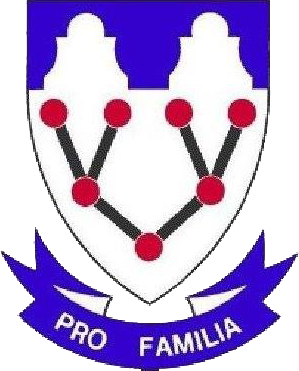1663, May 14 (letter no. 9, 6 Apr 1663 to 15 Apr 1663)
36
Achtbare wijse voorsienighe seer
discreten heeren, mijne heeren, en
raden der kercken en des selve
classis met aencleven van
dien.
Seer waerde, lieve, beminde, broeders
Alsoo ick tegenwoordich op mijn vertreck stae om mijn
reijse naer Batavia, bevorderen, en verhoope soo
wanneer ick daer gecomen sal sijn, vorder op
Malacka te geraken, bij mijn swager Jan van
Riebeeck, die dar opperhooft is van wegen de
Oostindische comp:e soo is desen noch voor
gevallen in kerckelijcke saecken, 't sedert mijnen
laetsten aen u: e: gesonden, om u: e: dan te ver-
staen te geven de gelegentheit vandien soo ist
dat:
April a:o 1663
Den 6:en d:o alhier is gearriveert, het jacht genaemt
Durgerdam, daer een predicant, op is genaemt
dom:e Balthasar de Metre van wegen de kamer
Amsterdam
Den selffden d:o heeft dom:e De Metre aen boort
gedoopt het kint, van den e: h:r admirael, Her-
men Klincke, ende is genaemt Virena, de ge-
tuigen sijn Leonard Winnincx, d' e: h:r vice-
admirael, den e: h:r Gijsbrant Geske, voor d'-
e: h:r Coenraet [Hoencke], en joffvrou Susanna
Huisman, voor joffvrou Wagenaers, en wedue
van wijlen Jacob vande Couter, en joffvrou
Maria Trompers, Godt de Heere geeft dat dit
gedoopte kint tot Sijne naems eere mach
op wassen.
Den 8:en d:o heeft dom:e De Metre een predikatie
gedaen, ende gedoopt dese vier navolgende kin-
deren, een vanden ondercoopman, en tweede
persoon, van deser fortresse, de getuigen sijn
d'e: h:r command:r Van Rijck ende sijn
huisvrou
37
April anno 1663
huisvrou, een van Elbert Dircxsz Diemer vrij bur-
ger, en is genaemt Christina, de getuigen sijn
Joachim Blanck, dispensier, en sijn huisvrou
Jannettje Boiddijs, een van Jan Coenraetsz
Visscher, en is genaemt Coenraet, de getuigen
sijn Jacob Kloeten, mede vrij lant bouwer
ende sijn huisvrou, ende een van een slavin
gebooren, en is genaemt Louwijs, de getuigen
sijn Gabriel Joosten Cornet, en Denijs Otto
beide corporaels, dit kint is in onecht geboren
Godt de Heere geeft dat dese gedoopte kinderen
tot Sijne naeme eere mogen opwassen.
Den 15:en d:o heeft dom:e De Metre, wederom een
predikatie gedaen.
Den sleffden d:o is dom:e De Metre, op sijn geordineer-
de schip gegaen om sijn reijse naer Batavia te
bevorderen Godt de Heere, verleene haer een
behoude reijse.
Met meer voor desen dan sijt van uwen, alder
geringsten, en ootmoedighsten dienaer van
herten gegroet en Gode bevolen, uwen diest
genegen vrient.
In 't fort de Goede Hoope aen
Cabo d' Boã Esperanse desen
14:en meij a:o 1663
Pieter vander Stael
kranckbesoeck:r
38 (envelope letter 10)
Caep 1663
comments:
None
Source: Stadsarchief Amsterdam, Archief van de Classis Amsterdam van de Nederlandse Hervormde Kerk: Ingekomen stukken betreffende kerkelijke zaken op Kaap de Goede Hoop,1655 -1792
Citation: NL-SAA, archiefinventaris 379, inventarisnummer 206, pp. 36-38
- Hits: 16615

